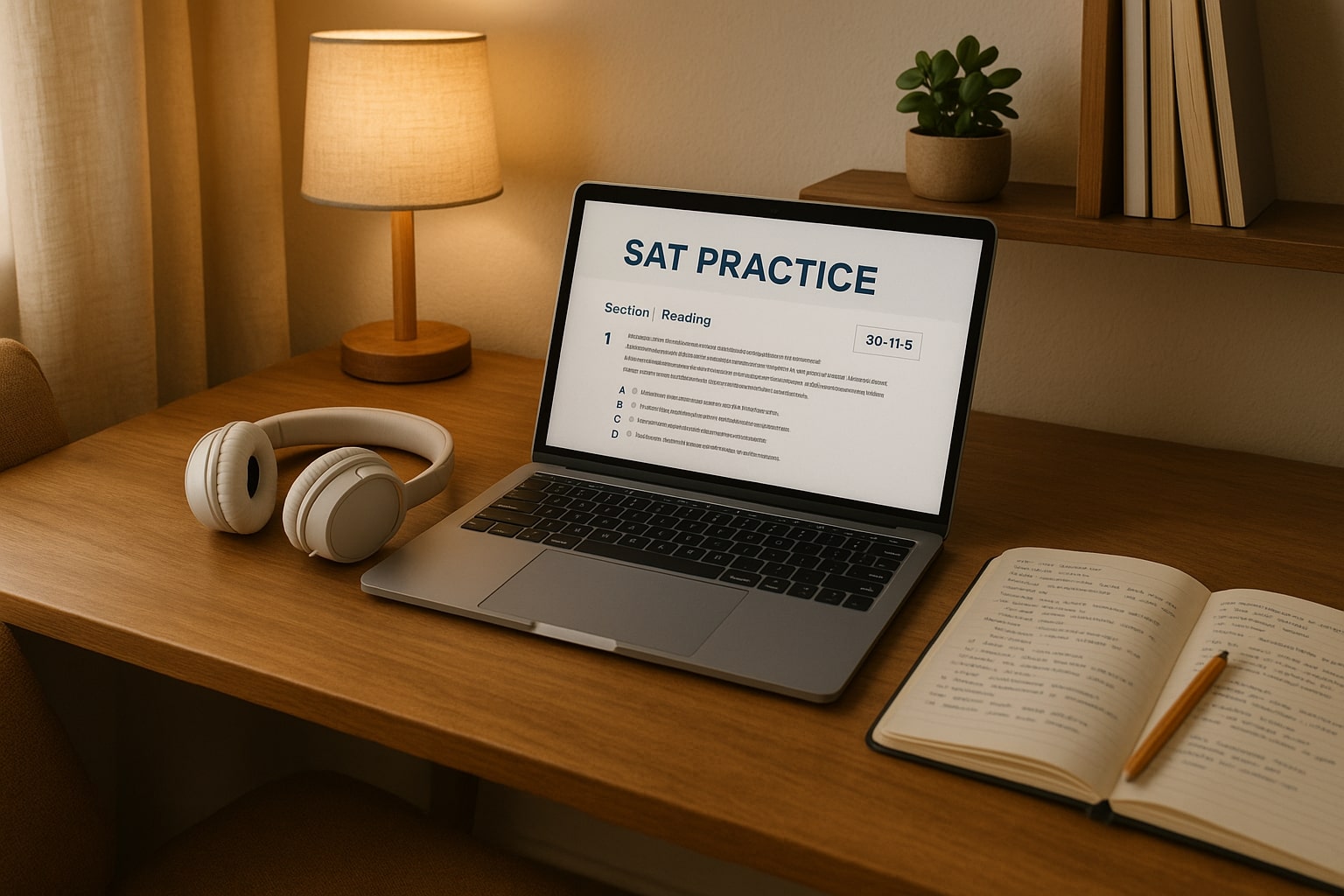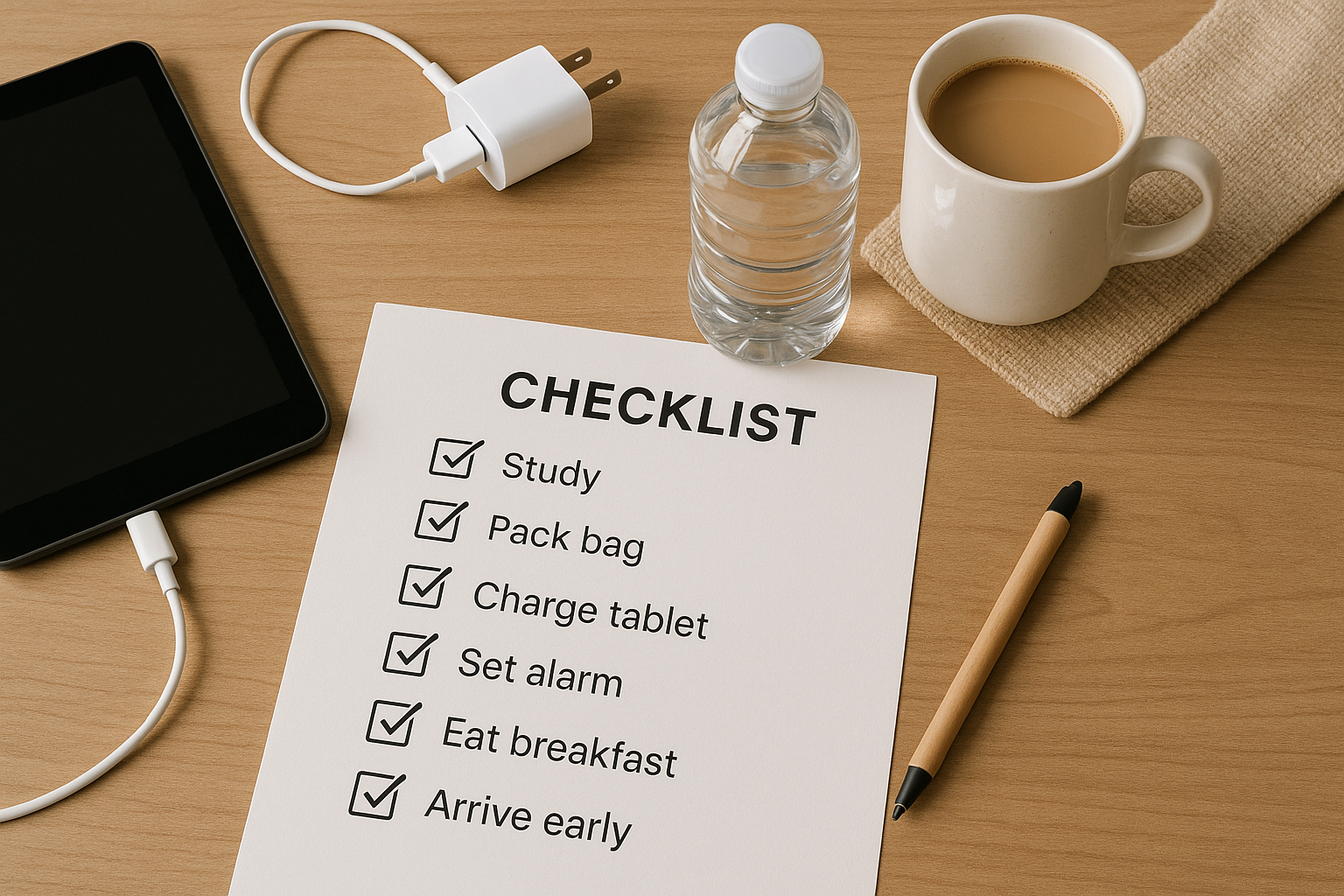Imagine Your Best SAT Self — and Build the Plan to Reach It
Okay — picture it: you’re sitting in a calm room, your test device is ready, you’ve warmed up with a short practice section, and the Digital SAT feels like something you can handle because you prepared the right way. That ideal test day doesn’t happen by accident. It grows from a study plan that fits your life, your pace, and your strengths — especially when you’re homeschooled and steering much of your own academic ship.
Why a study plan matters for homeschooled students
When you’re homeschooled, you get incredible freedom: flexible hours, personalized coursework, and the ability to focus on what interests you. But that freedom also means you’re often the one managing deadlines, balancing coursework with SAT prep, and making sure your college application story is built well. A study plan brings structure without stripping away flexibility. It helps you track progress, target weaknesses, and convert scattered practice into steady score improvements.
Start with a realistic baseline: test, goals, and timeframe
First things first: you need three pieces of information to design a plan that works.
- Your baseline performance. Take a full-length digital practice SAT under timed conditions. Treat it like test day so the results reflect your current performance.
- Your target score. Pick a clear, motivating goal. Think about the range of colleges you’re interested in and set a realistic target — a score that opens doors but isn’t so distant it feels unattainable.
- Your timeline. How much time do you have before your target test date? Twelve weeks? Six months? The closer the date, the more focused your plan must be.
Write these down. They will guide how many hours you study each week and what to prioritize.
Example: turning a baseline into a plan
Say you take a practice Digital SAT and score 1020, and your target is 1220 in four months. That’s a 200-point gap — doable if you break it into manageable chunks. Instead of panicking, break the difference down: aim for ~10–15 points per week on average, with bigger jumps after targeted practice and full-length review sessions.
Designing your weekly routine: balance, intensity, and variety
A sustainable routine is the one you’ll actually follow. Here’s how to build one that respects homeschooling flexibility while creating regular progress.
How many hours per week?
There’s no one-size-fits-all, but here are practical guidelines based on timeframe:
| Time before test | Recommended weekly SAT study | Focus |
|---|---|---|
| < 6 weeks | 10–15 hours | Full practice tests, review mistakes, targeted drills |
| 6–12 weeks | 6–10 hours | Mix of full tests, content review, and timed practice |
| 12+ weeks | 4–7 hours | Gradual skills building, pattern recognition, weekly practice tests |
Only you can decide the exact hours — take into account other coursework, extracurriculars, and family time. The goal is steady consistency, not exhaustion.
Weekly structure template (sample)
- Monday: 60–90 minutes — content focus (e.g., algebra review or grammar rules) with targeted drills.
- Wednesday: 60 minutes — practice sections (Reading or Math) under timed conditions.
- Friday: 45–60 minutes — vocabulary/command of evidence review and light practice.
- Saturday or Sunday: 2–3 hours — full or half practice test once every 1–2 weeks; detailed error review.
- Daily: 10–20 minutes — quick warm-up questions, flashcards, or mental math.
Spacing your practice avoids burnout and helps your brain consolidate learning.
Make practice authentic: use digital tools and simulate test day
The Digital SAT is a different experience from paper tests: reading passages are presented on a screen, the interface allows tools like strikethrough/highlights, and time management feels different. Practice on devices and platforms that mimic the actual interface so you’re comfortable with navigation and the pacing of on-screen reading.

Practice test strategy
- Take full-length, timed practice tests periodically to build stamina. These are the best diagnostic tools you have.
- After each test, do a structured review: categorize mistakes (careless, timing, conceptual, misread question), then create drills that attack the biggest categories.
- Simulate test conditions for at least some of your practice sessions: quiet room, timed sections, minimal breaks.
Focus on weaknesses, but keep strengths sharp
The most efficient gains come from a dual approach: shore up weak areas while keeping strong areas stable. If you’re already a strong reader but struggle with advanced algebra, it makes sense to invest more time in math — but don’t ignore reading entirely.
How to prioritize topics
- Use your practice test data as a mirror — it will show patterns. Do you miss a lot of function questions? Does evidence support errors in inference rather than vocabulary? Let the data guide you.
- Rotate focus weeks. Example: Weeks 1–2 concentrate on algebra fundamentals. Weeks 3–4 shift to reading and model-based reasoning. Then mix them in subsequent weeks.
- Include mixed practice so you’re used to switching between question types — just like on test day.
Active study techniques that actually stick
Active learning beats passive reading every time. Here are practical techniques that homeschooled students can use independently or with a parent/tutor.
- Explain it aloud. Teach a concept to an imaginary student — or to a parent. If you can explain a math concept in plain language, you own it.
- Error logs. Keep a running notebook or digital file of every missed question type and the lesson learned. Review it weekly.
- Interleaving practice. Mix different types of problems in one session so your brain learns flexibility instead of predicting patterns.
- Spaced repetition. Use flashcards for formulas, vocabulary, and grammar rules with spaced intervals to reinforce memory.
- Timed mini-sprints. Do short, intense 20–30 minute focus sessions to improve speed and concentration.
Sample 12-week plan (compact roadmap)
This is a sample structure you can adapt. It assumes some initial diagnostic has been completed.
| Weeks | Primary Focus | Weekly Activities |
|---|---|---|
| 1–2 | Baseline & content gaps | Full practice test; error log; targeted lessons (weakest topics); 3–5 hrs/week |
| 3–5 | Skill building | Section practice; concept drills; vocabulary/grammar routines; 5–7 hrs/week |
| 6–8 | Strategy & timing | Timed sections; pacing drills; one full test every 2 weeks; 6–8 hrs/week |
| 9–10 | Advanced practice | Mistake analysis; mixed practice; targeted tutoring sessions; 7–9 hrs/week |
| 11–12 | Test simulation & polish | Full tests each week; review timing and stamina strategies; light content review; 8–10 hrs/week |
When to bring in extra help
If you’re plateauing, running out of ideas, or need accountability, consider personalized tutoring. For many homeschooled students, short, targeted 1-on-1 sessions with an expert tutor can clarify concepts quickly and keep momentum going. Programs that combine human tutors with AI-driven insights can suggest the next most effective practice based on your recent performance, which makes study time more efficient.
Use available official resources and align them with your plan
Official digital practice tools and Bluebook-style interfaces make your prep realistic. Make sure you incorporate:
- Official full-length digital practice tests to mirror test format and timing.
- Official practice lessons for content review and targeted practice that align with your mistakes.
- Device practice so you are comfortable with the on-screen tools and navigation.
Pairing those official materials with personalized tutoring (for example, occasional Sparkl sessions that offer tailored study plans and expert tutors) can accelerate progress because the tutoring can interpret your official practice data and recommend precise next steps.
Managing time, focus, and motivation at home
Homeschool environments can be wonderfully flexible, but they can also introduce distractions. Here are practical ways to protect your study time and stay motivated.
Practical time-management tips
- Create a visible schedule. Use a wall calendar, planner, or a shared family calendar to book study blocks.
- Set small daily goals. Checking off a 45-minute session feels better than vague intentions like “study more.”
- Use accountability partners. Share your weekly goals with a parent, mentor, or tutor who checks in weekly.
- Reward progress. Small rewards help — a favorite snack after a full practice test or an afternoon off after a productive week.
Dealing with low-energy days
Some days you won’t be at peak focus. On those days, pivot to low-stakes but valuable tasks: review your error log, reorganize flashcards, or watch a short content video. Preserve momentum rather than forcing grind sessions that lead to burnout.
Test-day readiness for the Digital SAT
The final weeks should shift from learning new content to rehearsing the entire experience.
- Run through at least two full practice tests in real conditions (same start time as your test, similar meals, minimal interruptions).
- Prepare your testing device and any required apps well in advance. Practice with the digital interface until it feels familiar.
- Plan logistics early — test site, timing, what you’ll bring, and a calm pre-test routine (short warm-up sections, breathing exercises).

Final 48-hour checklist
- Get quality sleep the nights before the test.
- Eat balanced meals; avoid heavy new foods that might upset your stomach.
- Charge your testing device and prepare any allowed accessories.
- Do a brief, confident review — skim your error log, do a 20-minute warm-up, and then relax.
Tracking progress and adjusting the plan
Good plans are living documents. Each practice test gives you data; use it to tweak what you do next.
Simple progress-tracking framework
- Every 2 weeks: take a timed section or a short practice test to measure improvement in speed and accuracy.
- Every 4 weeks: take a full practice test and compare scores to your baseline. Celebrate improvements and identify stubborn weaknesses.
- Monthly review: adjust weekly hours, change focus topics, or add tutoring sessions if progress stalls.
Personalized support: when and how to use it
Many homeschooled students benefit from occasional expert guidance. Look for tutoring that offers:
- One-on-one sessions that target your specific weaknesses.
- Tailored study plans that evolve with your practice results.
- Trainers who teach test strategies, pacing, and mindset — not just content.
For example, when students combine focused 1-on-1 tutoring with their independent practice, they often close gaps faster because the tutor identifies the precise misconceptions that cost points. Services that blend human expertise with AI-driven insights can also help you spend time on the problems that will move your score the most.
Final thoughts: stay curious, stay kind to yourself
Preparing for the Digital SAT as a homeschooled student is an opportunity: you can craft a study plan that honors how you learn and builds habits that last beyond one test. Treat your prep as a series of experiments — try different study rhythms, note what helps you focus, and refine as you go. Keep your goals visible, break big tasks into manageable steps, and remember that progress is rarely a straight line.
If you ever feel stuck, consider short bursts of personalized help — even a few sessions of 1-on-1 tutoring or a guided study plan can change your trajectory. With consistent practice, honest reflection on your errors, and a flexible, well-structured plan, you’ll walk into test day ready to do your best.
Ready to start?
Pick a baseline date, set a target score, and map out your first two weeks. Track one thing obsessively at first — maybe accuracy on algebra questions or timing on reading passages — and build momentum from there. With steady practice, smart resources, and a plan that fits your homeschool life, you’ll be surprised how far you can go.
Good luck — and remember: this test measures a slice of what you can do, not all of who you are. Study hard, rest well, and show up prepared.















No Comments
Leave a comment Cancel